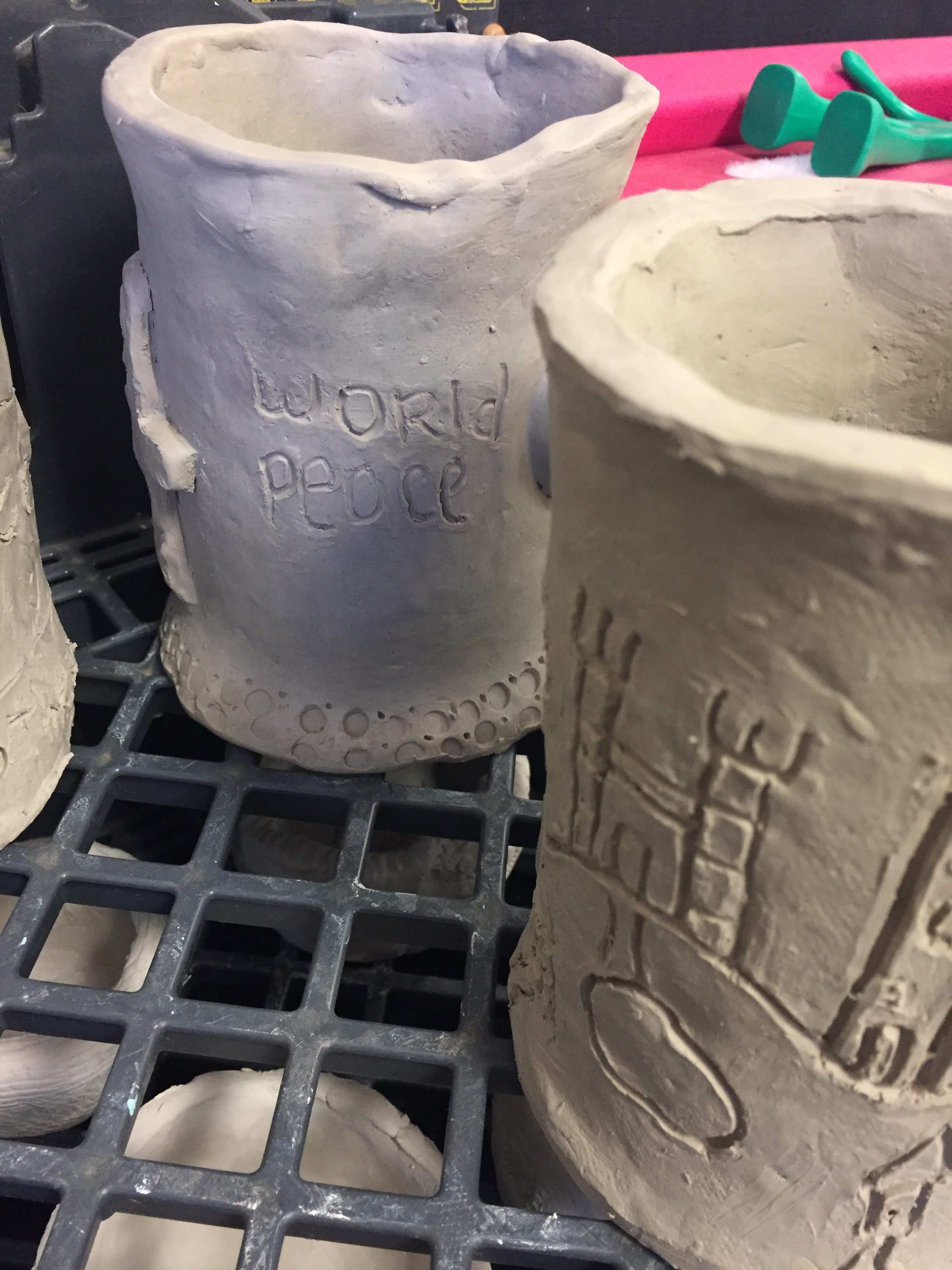"World Peace." Photo by Melody Weintraub
I've taught Middle School Art for many years. I've seen my teaching evolve from just teaching students how to make or draw things into why to make and draw things. In order to teach them "why" sometimes I must help them look at issues that they face and how those issues are connected to issues facing our world. For many of these students, this is the first time they have considered that their art could be used to communicate something that they are passionate about. I feel a responsibility to teach them the skills necessary to communicate this message. I believe that craftsmanship in art is as important as good writing and delivery is in a powerful speech. It needs to be consistent with the message and not distract from it. Showing them examples of art speaking they can see the variety of ways that other artists have communicated; Picasso's "Guernica," Ringgold's, "For The Women's House," Goya's "The Third of May 1808", for example. While exploring issues, I write down these themes on the board. This way students also learn the importance of conversation. I have seen them then begin to use this tool of collaborative exploration in constructing their own art. Sometimes they will even ask other students to help them develop ideas. I am always amazed at the results. Recently a student decided to explore the theme of "addiction," in creating his self-portrait. The result was a tonal portrait of himself chained inside a doorway but reaching to the outside where in the reflection of his glasses we see the colors of a beautiful day. One of the chains is broken. It is about gaining freedom from his addiction to video games, and wanting to play outside with his friends. What a transparent and powerful message from an 8th Grade student! But then so is the simplest of designs like the one carved on a ceramic cylinder--"World Peace." Theodore Roosevelt once said that, "People don't care how much you know until they know how much you care." Perhaps the best way we can teach students to care is by starting conversations and listening to them.
